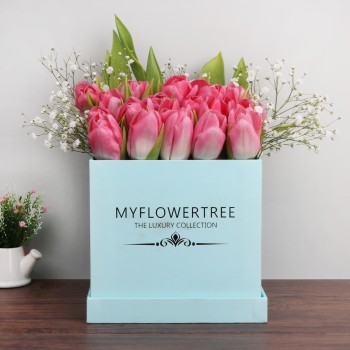views
Symbolism in Stems: What Different Flowers Mean in a Bouquet
A flower bouquet is not just a collection of beautiful blooms but often carries deep symbolism and meaning. Throughout history, different flowers have represented a range of emotions, sentiments, and messages, making the act of gifting a bouquet even more special. Whether you’re celebrating a joyous occasion or expressing heartfelt feelings, understanding the symbolism behind various flowers can help you choose the perfect arrangement that speaks without words.
Here’s a closer look at the meanings of popular flowers and how they add depth to any flower bouquet.
1. Roses: Love and Passion
Perhaps the most well-known flower, roses are synonymous with love and romance. However, the color of the rose in your bouquet can convey different meanings:

- Red Roses: Passionate love and desire
- White Roses: Purity, innocence, and new beginnings
- Pink Roses: Gratitude, admiration, and gentle love
- Yellow Roses: Friendship and joy
- Orange Roses: Enthusiasm and fascination
Whether it’s for a romantic gesture or to celebrate a milestone, roses are timeless additions to any bouquet, offering elegance and sentiment.
2. Lilies: Purity and Renewal
Lilies are often associated with purity, beauty, and renewal. In many cultures, they symbolize rebirth and are commonly used in celebrations of life and new beginnings. There are different varieties of lilies that can represent different emotions:

- White Lilies: Purity and virtue
- Stargazer Lilies: Ambition and prosperity
- Calla Lilies: Elegance and beauty
Adding lilies to a bouquet is ideal for occasions like weddings or baptisms, where the message of renewal and purity is central.
3. Tulips: Perfect Love and Hope
Tulips are another classic flower known for symbolizing perfect love. They come in various colors, each carrying its own message:

- Red Tulips: Deep love
- Yellow Tulips: Cheerfulness and sunshine
- Purple Tulips: Royalty and admiration
- White Tulips: Forgiveness
A tulip-filled flower bouquet is perfect for expressing love and admiration, making it a great choice for romantic or celebratory occasions.
4. Orchids: Strength and Beauty
Orchids symbolize rare beauty, luxury, and strength. Their exotic appearance makes them a standout addition to any bouquet, and they are often associated with elegance and sophistication. Orchids are also believed to represent strength and resilience, making them a thoughtful choice for someone who has overcome challenges or is embarking on a new journey.

5. Daisies: Innocence and Joy
Daisies are simple yet charming flowers that represent innocence, joy, and new beginnings. Their cheerful appearance makes them a popular choice for lighthearted bouquets that celebrate friendship, youth, and happiness. Daisies are also associated with purity and are often used to convey childlike wonder and positivity.

6. Sunflowers: Loyalty and Happiness
Sunflowers, with their bright and bold appearance, symbolize loyalty, happiness, and warmth. They represent the sun and are often used in bouquets to express adoration and lasting friendship. Sunflowers are the perfect addition to bouquets meant to uplift someone’s spirits or celebrate a long-lasting relationship.

7. Carnations: Fascination and Distinction
Carnations carry deep historical symbolism and are known to represent fascination, distinction, and love. Like roses, carnations also come in various colors that convey different meanings:

- Red Carnations: Admiration and love
- Pink Carnations: Gratitude
- White Carnations: Pure love and luck
A flower bouquet with carnations is versatile and can be used for various occasions, from expressing love to showing appreciation.
8. Lavender: Serenity and Grace
Lavender is a symbol of calm, serenity, and grace. Its soft purple hues and delicate fragrance make it a popular choice for bouquets meant to convey peace and relaxation. Lavender is often included in bouquets for healing, wellness, or simply to bring a sense of calm to the recipient.

Choosing the Right Bouquet
When selecting a flower bouquet, understanding the meaning behind each flower can make your gift more meaningful. By carefully choosing flowers that align with the message you want to convey, you can express emotions such as love, joy, admiration, and hope with elegance.
Whether you are celebrating a milestone, expressing sympathy, or simply showing someone you care, the flowers in your bouquet can communicate volumes. So next time you send or receive a bouquet, take a moment to appreciate the rich symbolism behind each bloom.
Conclusion
Every flower in a flower bouquet has its own story to tell. Whether you’re expressing love with red roses or celebrating joy with yellow tulips, the right combination of flowers can make any occasion more memorable. The beauty of flowers lies not only in their appearance but also in the emotions they convey, making them one of the most meaningful gifts you can give.






















Comments
0 comment